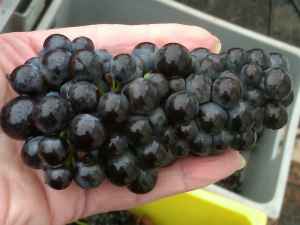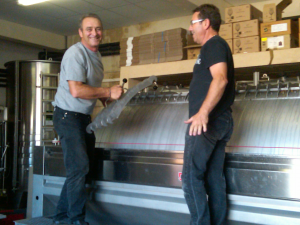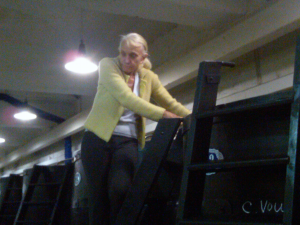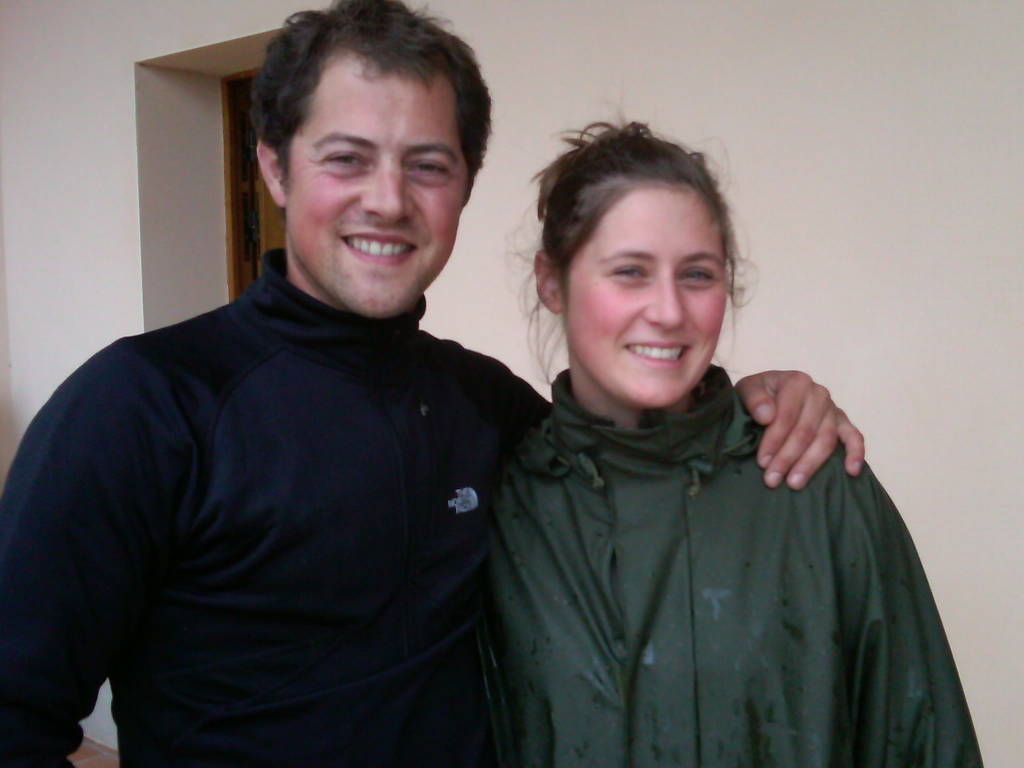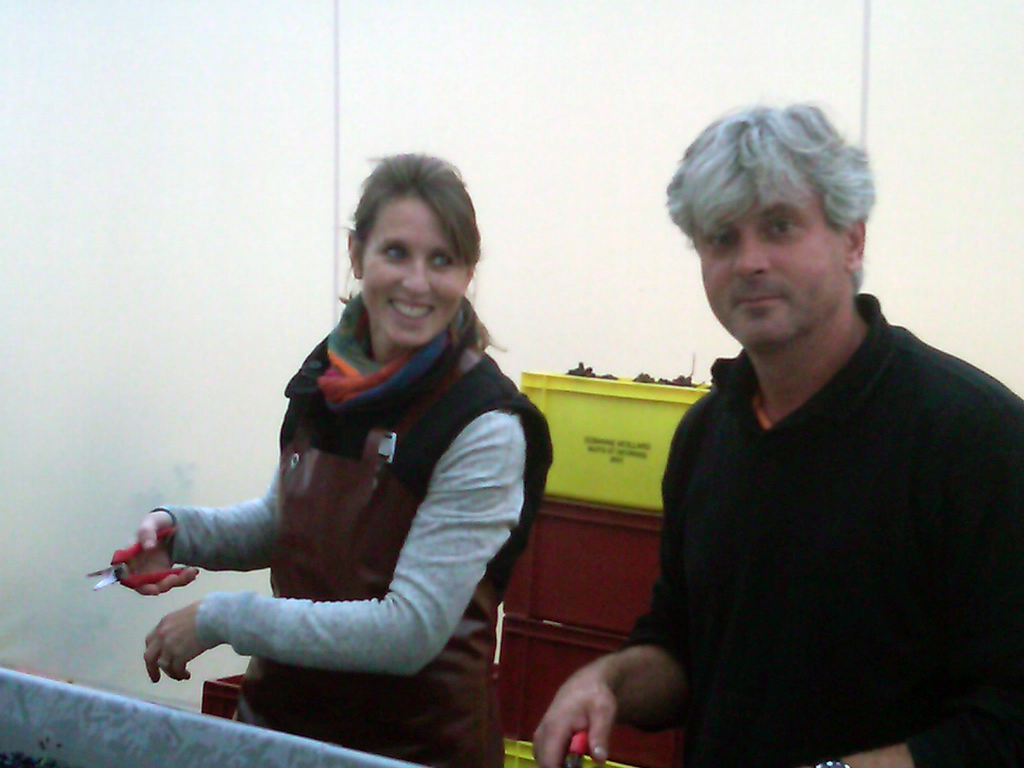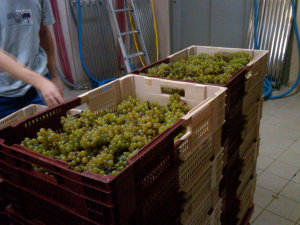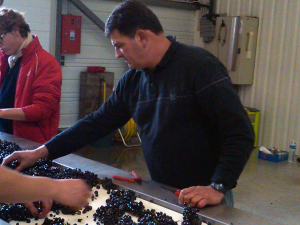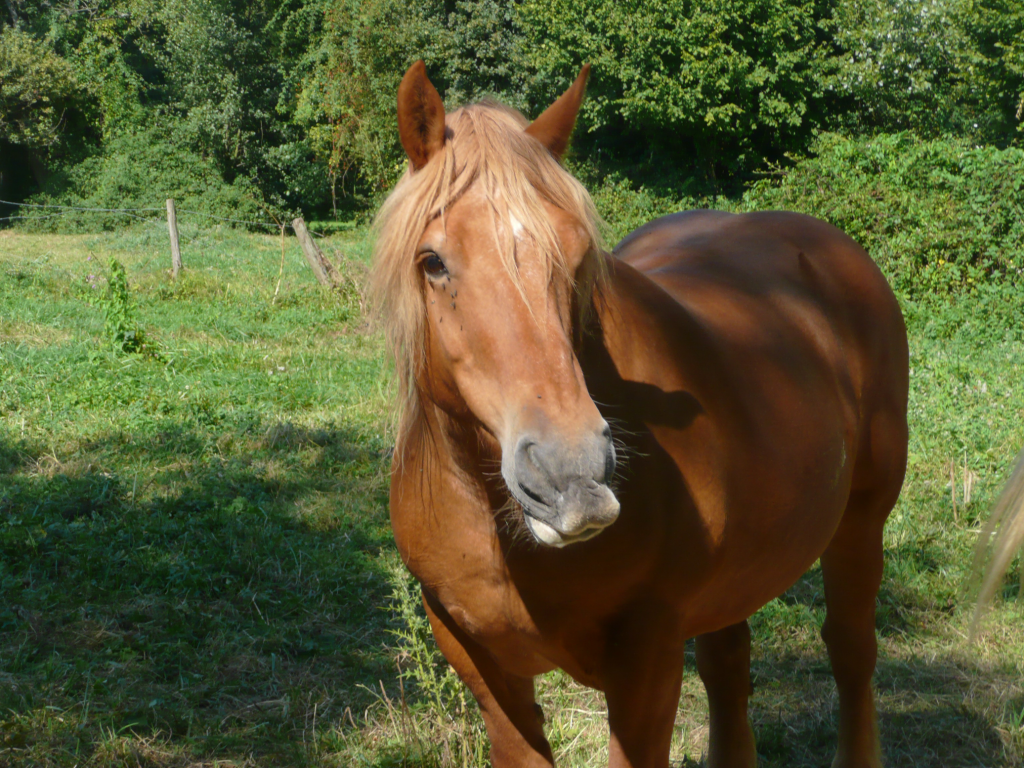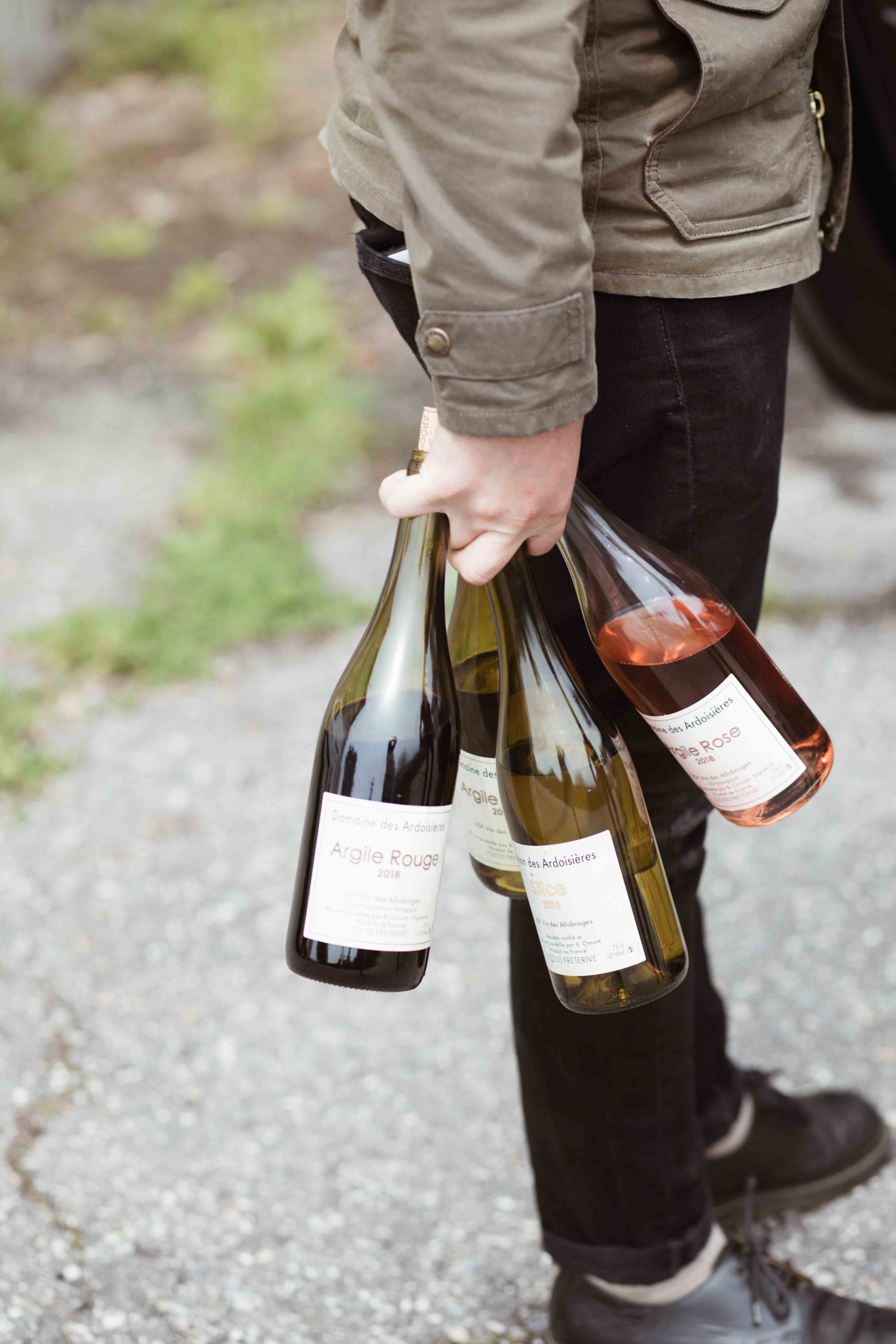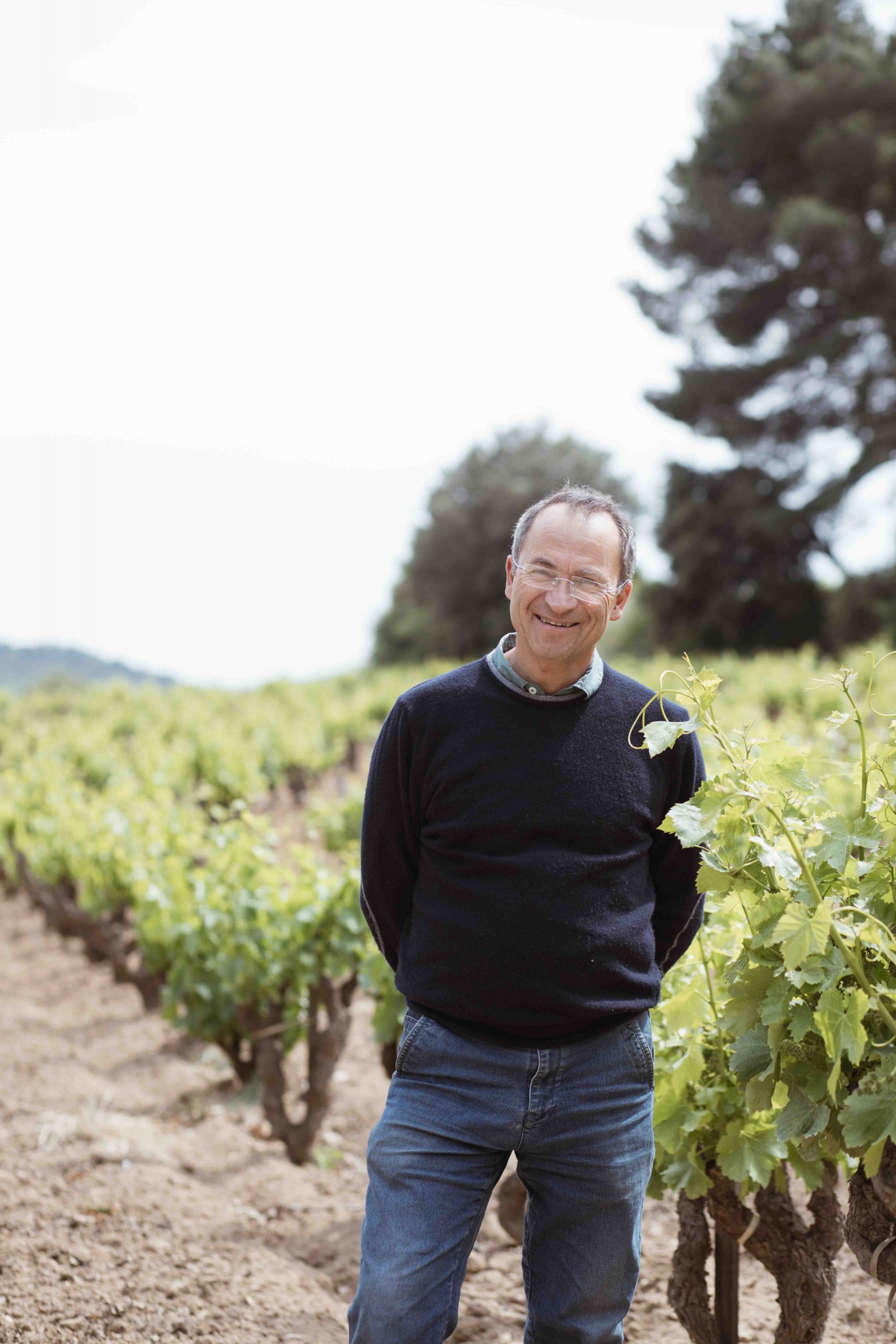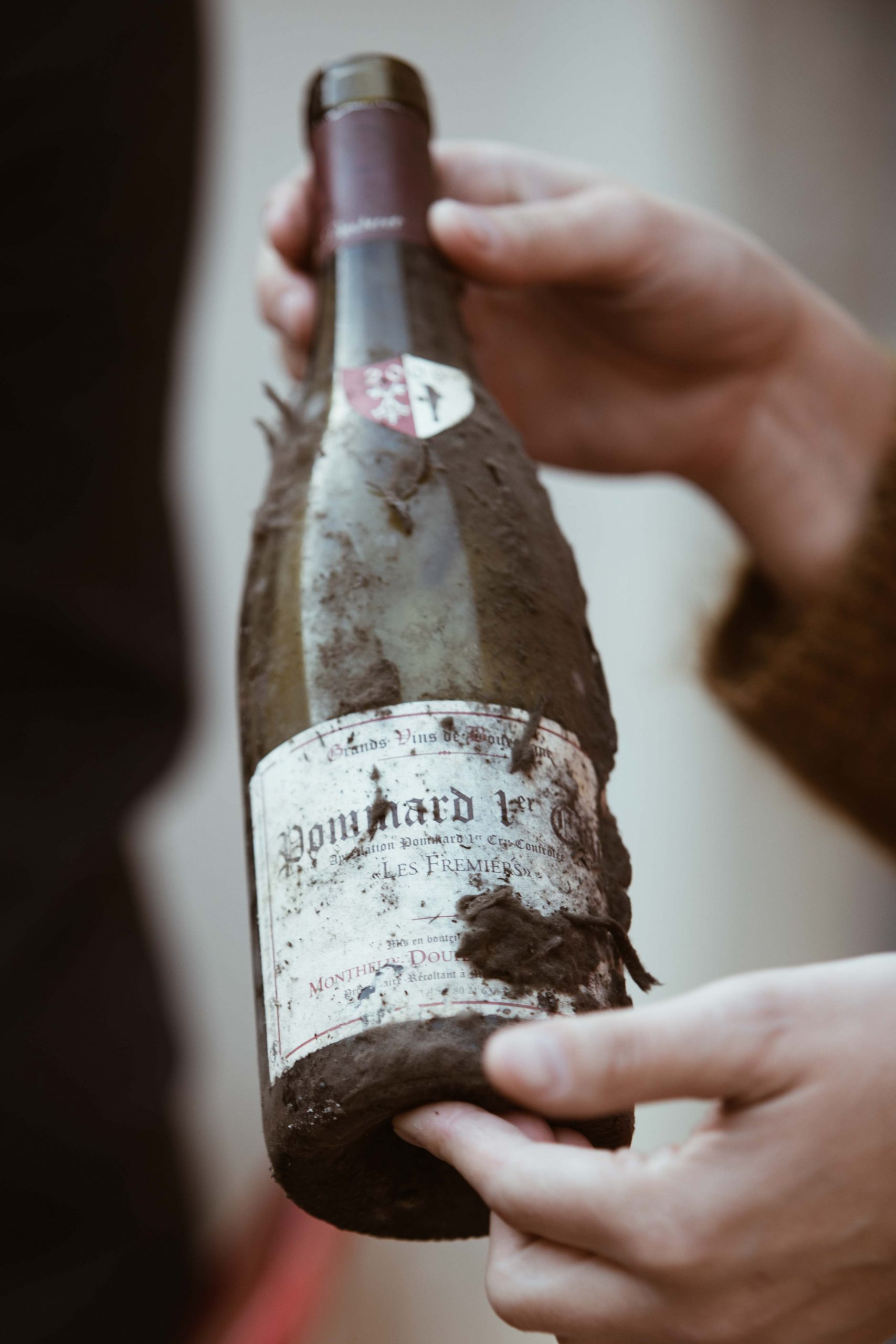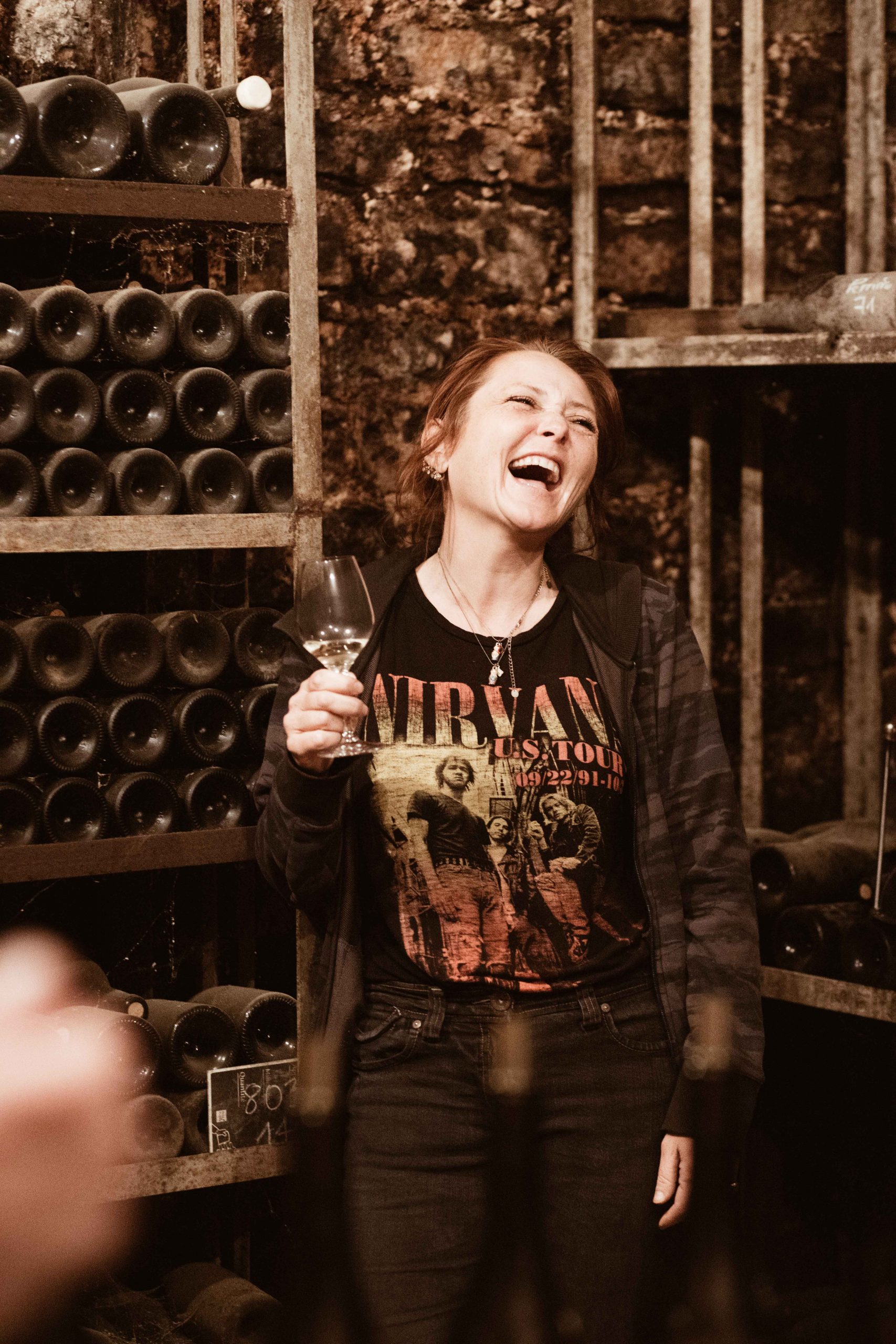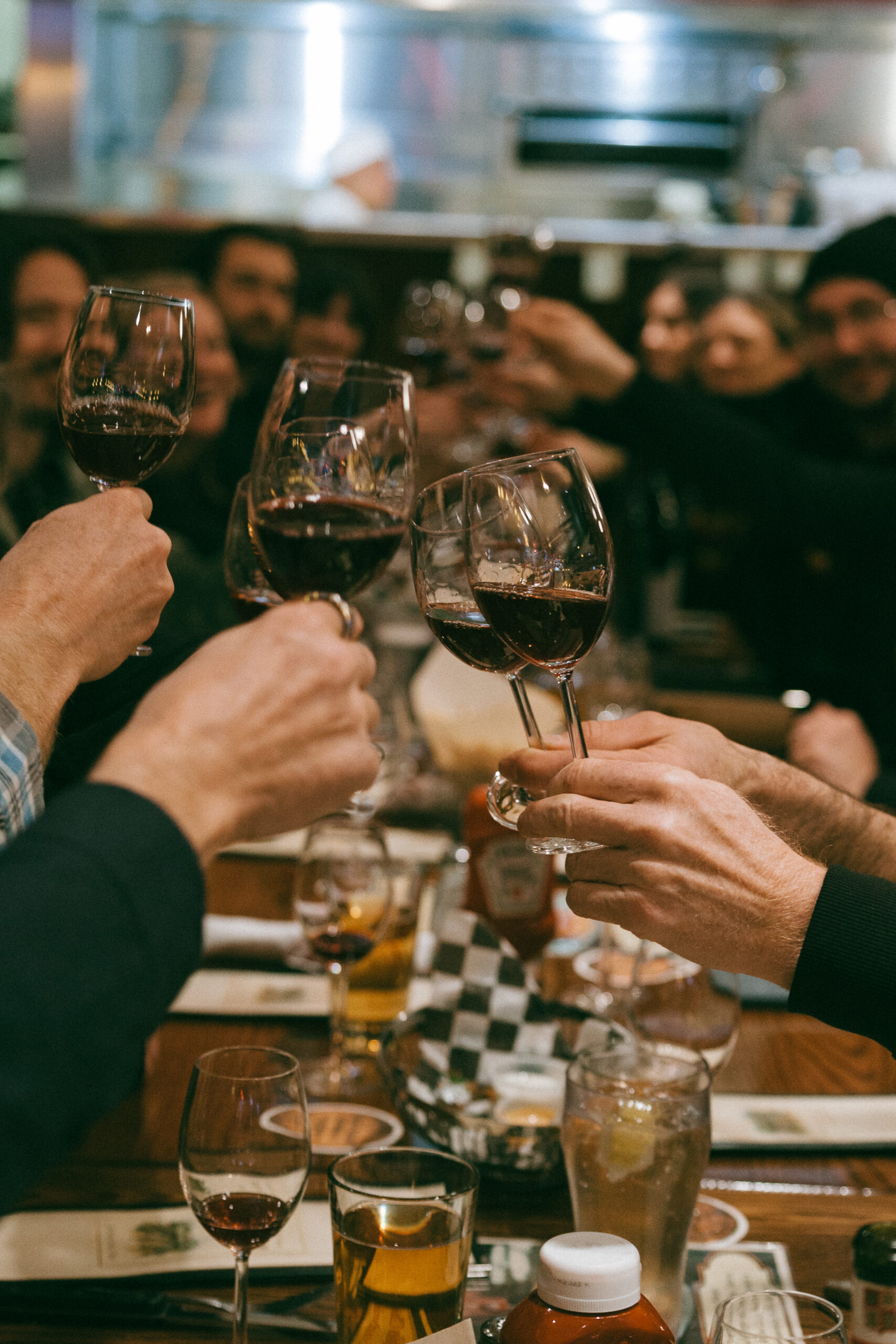When I arrived in Burgundy at the end of August, no one was very cheerful. After a very cold winter, some of the vines had died, a frost had formed during flowering which greatly reduced the future crop, and a lot of millerandage occurred.
Then, after a scorching heat-wave from the end of June to mid-July, the weather turned rather cool and wet. Vineyards were stricken with mildew and odium.
Everyone was hoping for a great month of September to ripen the grapes. There is a saying: “September makes the wine…” and it has happened in previous vintages, such as the great 1978 vintage.
The Mâconnais area endured hail that affected much of, but not all of the vineyards around Pouilly- Fuissé. Two weeks before harvest, 80% of the vineyards of Santenay were destroyed by a hail storm.
But then, two weeks of warmer weather promoted ripeness. The areas of Chassagne and Meursault started harvesting September 20th. Domaine Morey-Coffinet was delighted with their crop. I tasted the fresh juice of Chassagne-Montrachet “Les Houillères,” “Blanchots Dessus,” and “Batard-Montrachet”… who would believe that grape juice could be so sweet, smooth and totally different from one another!
Thibault Morey proudly gave me two analyses from the Centre Oenologique de Bourgogne. The sugar levels, pH, alcohol and malic acids were all in beautiful balance! For example, the Chassagne-Montrachet had 222 g/l of sugar, a pH of 3.12, 13.5% alc/vol, and 4.70 g/l of malic acid. The quality is great but the quantity is at least 30% less than normal…
Lalou Bize-Leroy had already harvested her Chevalier, Criot, Meursault, and Auxey-Duresses, and was very excited about the quality. But of course it turned out to be the smallest crop she ever had: 10 hectoliters/hectare…By the end of that week, she had harvested her Grand Crus at Domaine Leroy.
The weather forecast was rather gloomy toward the end of the week, so Arnaud Mortet and Christophe Perrot-Minot started on September 22nd. Having visited Arnaud’s vineyard intensively 2 weeks earlier, I was confident.
He and his sister Clémence were at the winery, sorting out grapes, washing small baskets before sending them back to the vineyard.
It was the same scenario with Christophe Perrot-Minot and his wife Marit, both at work at the sorting tables. Yes, tables, more than one, for double screening. Furthermore, they have been modernized to the point of eliminating leaves, stems, insects and loose unwanted berries. There were lots of bunches with millerandage which both Arnaud and Christophe very happy about. The skins were also very thick…no problem with color and pigeage (punch-down) will be at a minimum.
In Prémeaux, I stopped by Domaine Patrice Rion. Both he and Maxime were busy with their white grapes from Nuits-St.-Georges. Their Nuits-St.-Georges Clos St.-Marc was fantastic.
Bruno Clavelier and Emmanuel Rouget, assisted by his eldest son, were both sorting out grapes when I saw them.
2010 is definitely a vintage that will reflect the extreme attention paid to vineyard management during the month of August. Looking from the RN-74, one could evaluate the quality of the harvest. Not everyone was successful. This vintage reminds me of 2008, but I must admit 2010 is a perfect example of how microclimates come into play.
For example, with Domaine Michel Gay’s different Beaune Appellations, you could see the difference a week makes in ripening. Also, some smart growers had left weed growth between rows so they could absorb the rain, instead of the vines.
In Mâcon, Dominique Cornin had unfortunately been hit by hail. Yet, the weeds growing between rows saved his small crop. Standing on the hillside, one could clearly see the difference between vineyards.
Let’s end with some good news: the LoireValley had great weather and is looking forward to a fantastic vintage. As for Champagne, I visited Stéphane Coquillette in early September and admired their vineyard maintenance and grape quality. By the 24th of September, Stéphane was ecstatic and already declared an exceptional vintage. But there too, vineyard management was the key.
Modernization of wineries and new technical knowledge have made a huge impact on quality no matter what the vintage is; there is no excuse to produce a mediocre wine.

